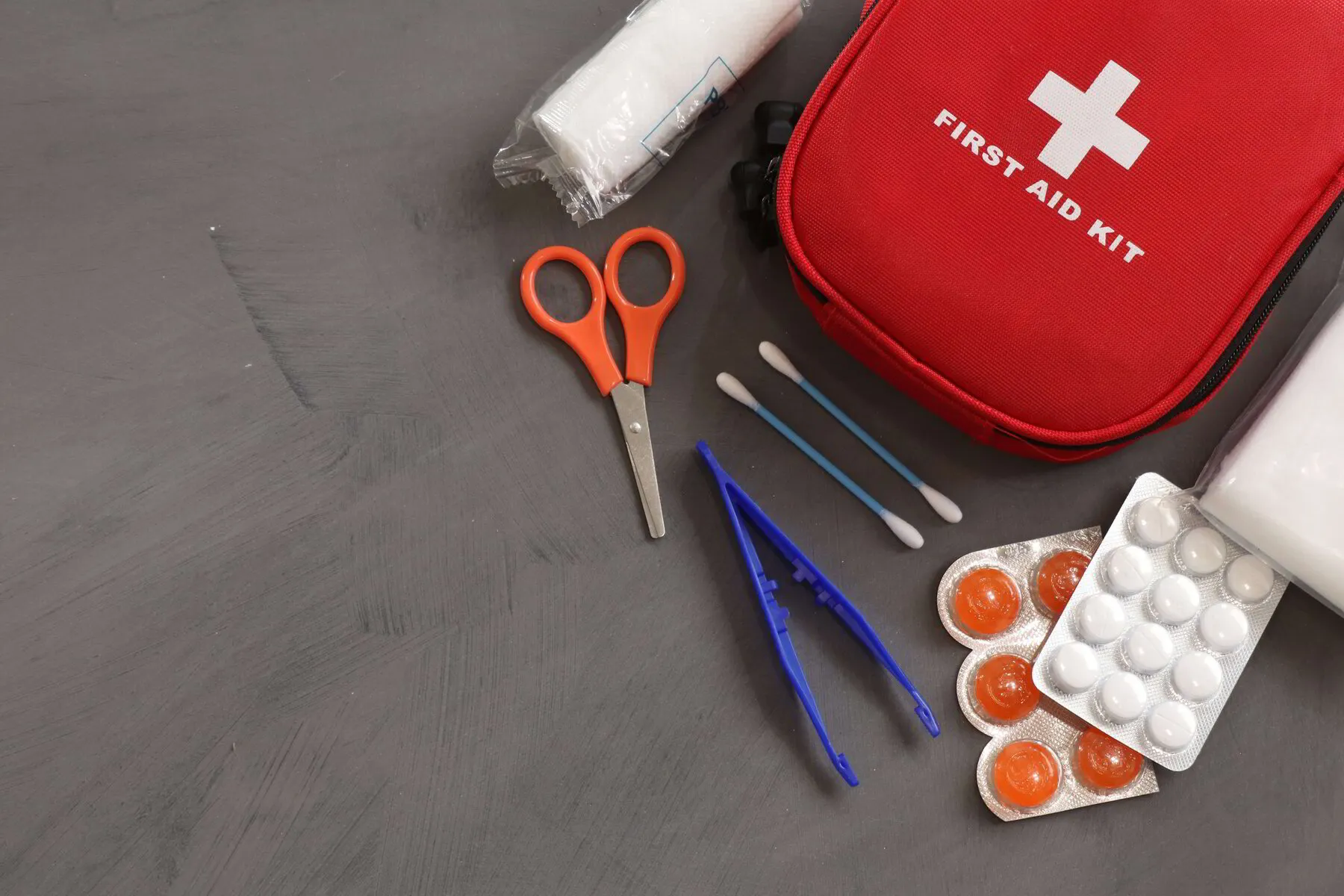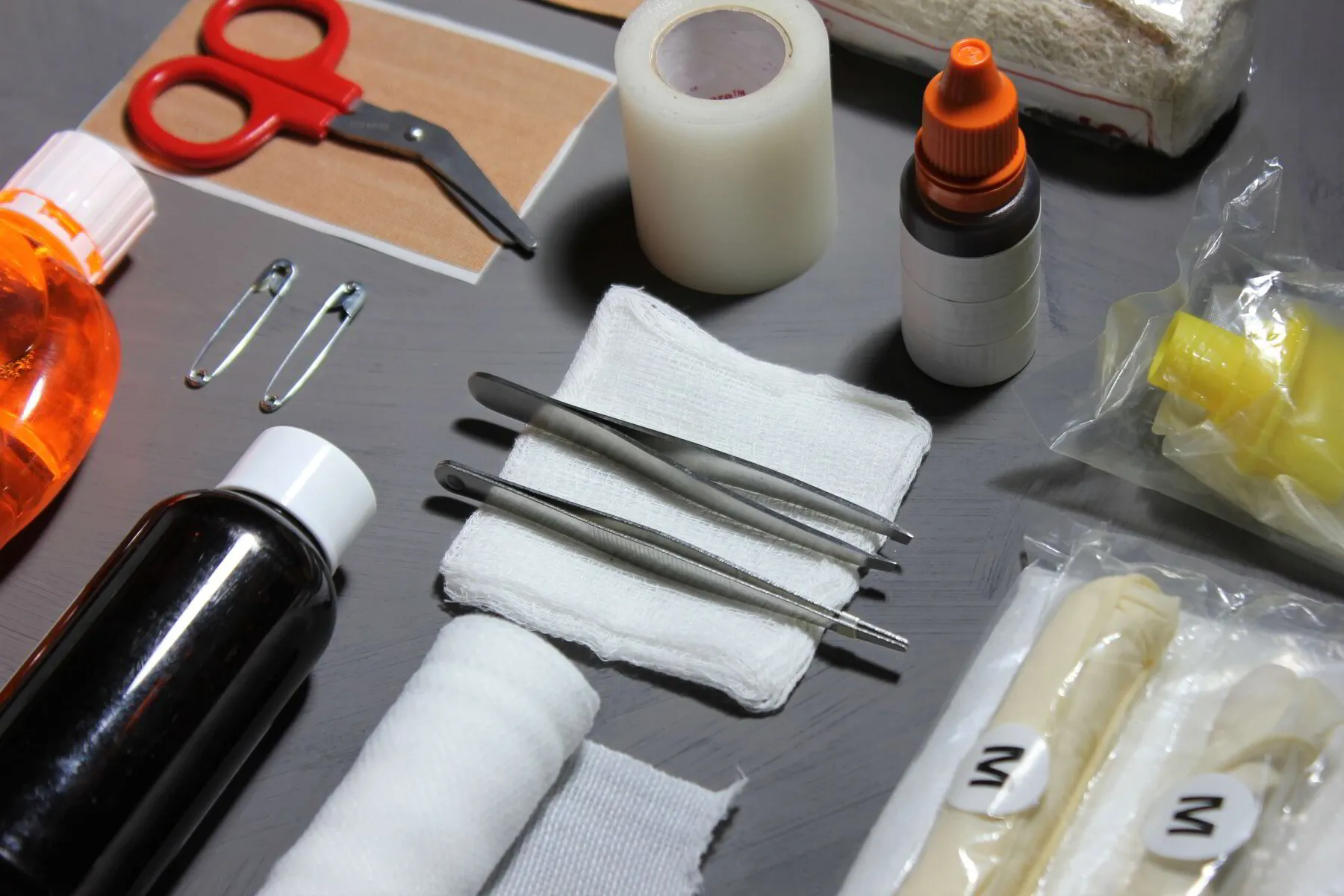All of us have seen a First Aid kit and many of us have had to use a First Aid kit to treat a variety of injuries in the workplace, on the side of the road, or at home. Being able to assist someone during an emergency that could save their lives is an amazing experience and everyone should consider purchasing a First Aid kit and book themselves for an accredited First Aid course to learn the skills needed to use the equipment in a First Aid kit to the best of their abilities!
1. Who needs to have a First Aid kit?
For most people, a First Aid kit is a highly recommended “nice-to-have” purchase. It is something you should rather have and never use, than need it and don’t have it! Especially if you have children around the house, you travel a lot, or you enjoy the outdoors!
In the formal working environment, the Occupational Health and Safety (OHS) Act 85 of 1993 stipulates in the General Safety Regulation (GSR) Section 3(2) that where more than 5 people are employed, First Aid kit/s shall be made available by the employer to treat the injured. These First Aid kits must be always accessible. Accessible does not mean a single First Aid kit locked away in an office where 300 employees work in a large factory! GSR 3(3) says that the employer needs to consider the number of employees, the nature of the work activities performed and the type of injuries that can be expected when deciding on a First Aid kit, and the number of First Aid kits that is to be installed.
2. Are there different types of First Aid kits?
In the workplace, the main First Aid kits that are sold are called Regulation 3 and Regulation 7 First Aid kits. Regulation 3 First Aid kits contain the minimum equipment required as per the OHS Act and Regulation 7 First Aid kits contain a Body Fluid Spill kit. Regulation 3 kits are fine for low injury environments like office blocks whereas Regulation 7 kits would be required in environments where lacerations or amputations could be expected like Engineering, Manufacturing, or Mining environments. A First Aid kit is not always a “one size fits all” solution and additional content may be required to meet the requirements of your workplace e.g. an Eye Wash Station where employees work with chemicals or a Tourniquet where employees work with sharp rotary equipment like wood mills.
For the public, there are many different First Aid kits to meet your needs! From small compact pocket size snakebite First Aid kits through to chunkier 6-man Boat First Aid kits.
3. What should be in a First Aid kit?
According to the OHS Act, the minimum requirements that a First Aid kit should contain include:
- 1x 100ml Wound Cleaner/Antiseptic
- Swabs for cleaning wounds
- 100g Cotton wool for padding
- Minimum 10x Sterile Gauze pieces
- 1x Pair of forceps
- 1x Pair of scissors
- 1x Set of Safety Pins
- 4x Triangular bandages
- 4x Roller bandages (75mm x 5m)
- 4x Roller bandages (100mm x 5m)
- 1x Roll of elastic adhesive (25mm x 3m)
- 1x Non-allergenic adhesive strip (25mm x 3m)
- 1x Packet of adhesive dressing strips (minimum quantity, 10 assorted sizes)
- 4x First Aid Dressings (75mm x 100mm)
- 4x First Aid Dressings (150mm x 200mm)
- 2x Straight splints
- 2x Pairs Large disposable latex gloves
- 2x Pairs Medium disposable gloves
- 2x CPR mouthpieces or similar devices
Please refrain from keeping any oral medication like Aspirin or other tablets in your First Aid kit. If you give someone tablets and they die from an allergic reaction or other medical complication you could be held accountable!
4. Where should I keep my First Aid kit?
In the Workplace, there is the option of metal Wall Mounted or Nylon bag First Aid kits and the option of choice would depend on your working environment. A Nylon Bag would work better for school sports whereas a mounted wall unit would be better in a factory. But whether you choose a metal box or Nylon bag, First Aid kits need to be kept or mounted where they are easily accessible and visible during an emergency. The appropriate Health and Safety signage also need to be installed to point to your First Aid kit.
All motorists should carry a small First Aid kit in their vehicles so that they can treat themselves, their families, or other people injured in motor vehicle accidents while they wait for the Paramedics to arrive. At home, it’s a good idea to keep a First Aid kit in an easily accessible place in the kitchen.
5. Where can I purchase a First Aid kit?
We stock a wide range of different First Aid kits to meet the requirements of every user! Our kits are of high quality, and we ship countrywide! We also stock First Aid refill kits to replenish your stock or replace the expired stock! To order visit our online store or click on the options below:
Regulation 3 First Aid Metal Wall Mounted First Aid Box
Regulation 3 First Aid Nylon Carry Bag
Regulation 3 First Aid Refill kit
Regulation 7 First Aid Metal Wall Mounted First Aid Box
Regulation 7 First Aid Nylon Carry Bag


